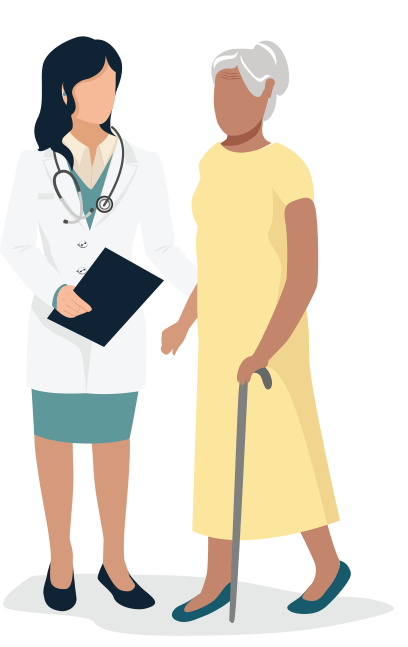Team Work: Interprofessional health education
TEAM WORK MAKES THE DREAM WORK

Cerissa, 45, has Type 2 diabetes and hypertension. She was diagnosed four years ago when she visited a health clinic due to a slow-healing wound. Because she does not have health insurance and can’t afford to regularly see a clinician to manage her health, she attends a biannual county health fair hosted by local public health groups and Emory’s clinical and public health programs to provide care and health education to underserved communities. While at the fair, she receives numerous services including a physical exam, a wound and extremity check, and mental health and physical therapy assessments. She also has her prescriptions refilled, visits with a nutritionist, and receives her annual flu shot and COVID-19 booster. A social worker provides resources for care. While these are fictional scenarios, they are the reality of health care and community health in the US today and reflect the importance of an interprofessional team-based approach to improving health and access to health care.
As a leader in health care and public health in Atlanta, the state of Georgia, and across the US, Emory is pushing the boundaries on how to educate its health students to facilitate the best team that will improve the health of all. The Woodruff Health Sciences Center (WHSC) recognized the necessity of interprofessional health education when it created the Interprofessional Education and Collaborative Practice Council in 2018. The work of this council led to the establishment of the WHSC Office of Interprofessional Education and Collaborative Practice (IPECP), launched in March 2022.
The mission of IPECP is to transform health care and public health through interprofessional educational opportunities.

Clinical care providers routinely work with public health practitioners to develop health promotion and disease and injury prevention programs. Because such collaboration is already happening in practice, the most effective health sciences education programs adopt an approach that teaches students and trainees how to work skillfully on interprofessional teams.
The work of IPECP focuses on five pillars: faculty development, student curriculum, research, simulation, and clinical practice. The office is a forum for the exchange of new ideas and methods for teaching znterprofessional core competencies, driven by the belief that a healthy community improves the lives of all.








